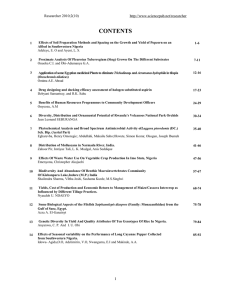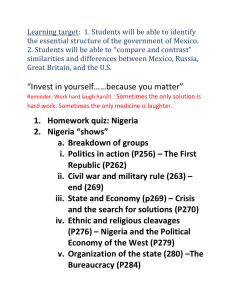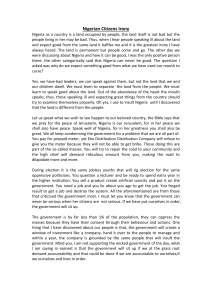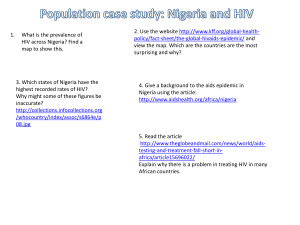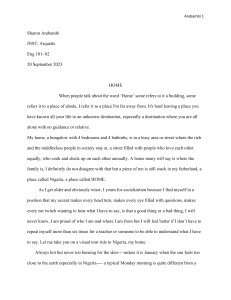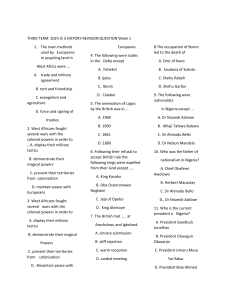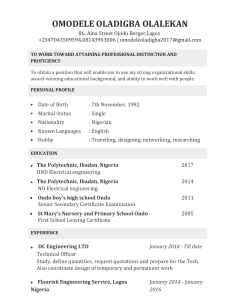Abstract The Clean Water for Everyone presentation will highlight
advertisement
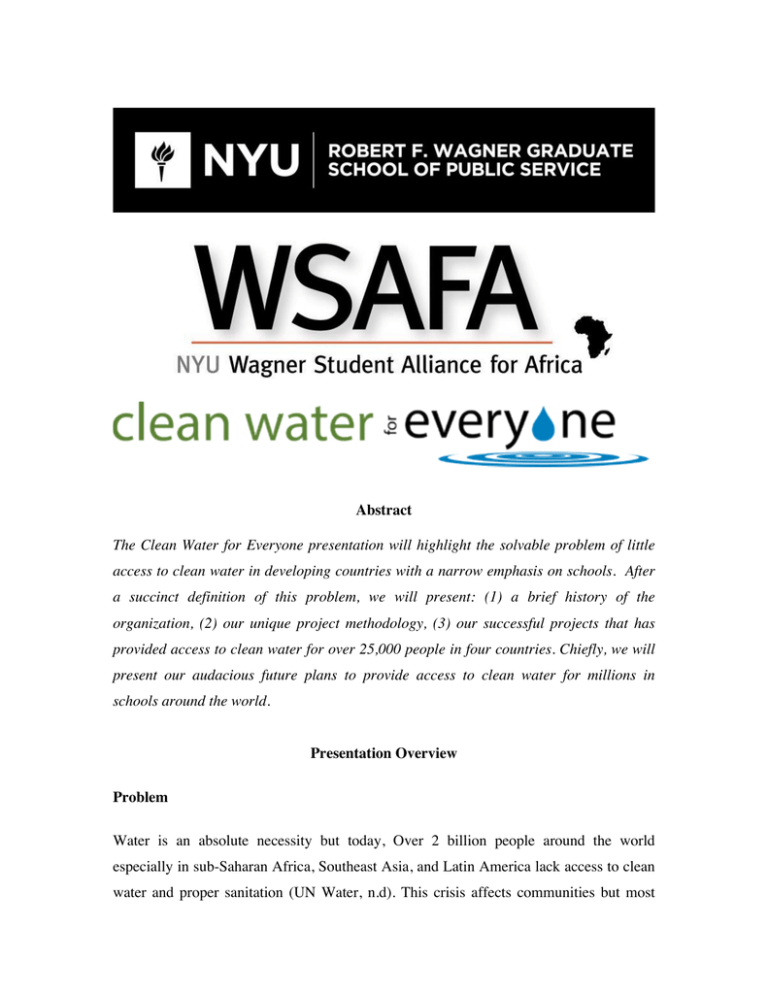
Abstract The Clean Water for Everyone presentation will highlight the solvable problem of little access to clean water in developing countries with a narrow emphasis on schools. After a succinct definition of this problem, we will present: (1) a brief history of the organization, (2) our unique project methodology, (3) our successful projects that has provided access to clean water for over 25,000 people in four countries. Chiefly, we will present our audacious future plans to provide access to clean water for millions in schools around the world. Presentation Overview Problem Water is an absolute necessity but today, Over 2 billion people around the world especially in sub-Saharan Africa, Southeast Asia, and Latin America lack access to clean water and proper sanitation (UN Water, n.d). This crisis affects communities but most importantly schools where children from different backgrounds gather to get an education. Inspired by this troubling statistic and personal experiences growing up in Nigeria, I decided to establish an organization called Clean Water for Everyone. Mission & Unique Project Methodology Clean Water for Everyone aims to provide access to clean and affordable water supply in developing nations by working with local people and organizations to achieve positive and measured social, economic, and environmental impacts. We employ a volunteer system called “Water Agents” that allows a participative role for communities interested in getting involved. This method permits us seek advice from the locals and avoids at all cost ethnocentric problem solving ideology. Successful Projects In the years of its existence, I am pleased to announce that the team has provided access to clean water for over 25 ,000 people in countries such as Bolivia, Dominican Republic, Nepal, Nigeria, and other areas where access to this necessity is, indeed, a luxury. Sustainability Most of our projects are implemented in schools and educational institutions. Doing so, this model allows a suitable atmosphere for education and also ensures maintenance and sustainability of the infrastructure provided. We also understand one size does not fit all; hence we foster mutually beneficial partnerships with communities of choice by requesting they contribute 20-40% to projects. Doing so, we provide a reciprocal relationship that allows them to have a voice in the projects. If you would like to see what our projects looks like; watch the (2:10) summary video of our project in Lagos, Nigeria: http://www.youtube.com/watch?v=8Du9DMhWusw Future Projects In 2014, we plan to implement projects in Kenya, Mali, Nepal, Nigeria, and Sudan. These projects should provide access to clean water for over 100,000 people. Our long term goals includes working with government to mandate a plan that will provide access to clean water for millions in schools around the world.

